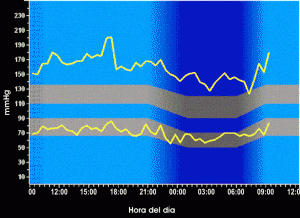
I first posted about AARP’s high priced life insurance program two years ago. Has there been any reform to that profit mill taking advantage of seniors? No. AARP member options are only among the most expensive.
AARP now promotes “The AARP Life Insurance From New York Life” on a separate website. It’s “exclusively for AARP members.” Their mission statement: “To help make it simpler for AARP members to apply for affordable life insurance protection, AARP selected New York Life to provide a life insurance program just for its members.” (italics mine)
simple = more expensive
The AARP New York Life insurance web page has three choices, all of them no physical exam, i.e. paramed exam. Simple. Higher priced simplicity.
Are you in good, average or even slightly below average health? Focus on fully underwritten life insurance requiring a paramed exam. It’s free, at home or wherever you choose at your convenience, takes about 20 minutes and saves you a considerable amount of money.
Best value in rapidly descending order:
- full underwriting: paramed exam
- simplified issue: no paramed exam
- guaranteed issue: no health questions
Unsure if qualified for fully underwritten coverage? Find out. You’d be surprised. Type 2 diabetics with good control can get standard rates. Always check first before applying. Even if a simplified issue product is advisable, shop around for the lowest prices. There are much better deals than those offered through AARP.
Doubly more expensive permanent
For example, $25,000 permanent coverage female 66 years old, monthly premiums
$70.00 Transamerica at preferred non-tobacco, GUL*, age 121
$74.00 Transamerica at standard non-tobacco, GUL*, age 121
$127.52 AARP Life Insurance program from New York Life, age 121
Why would an organization, supposedly acting in its members best interest, not promote fully underwritten life insurance options? How about: ease of issue, faster turn around, lower labor costs, higher premiums, higher profits.
Term: At your age?
Term is to replace lost income or to cover a debt like a mortgage. If there is a shorter duration need, term life insurance might be suitable, but generally retirees should get permanent life insurance for estate planning and final expenses, not term. Outlive the term period, and there’s zero benefit. If for some reason term is needed, get fully underwritten coverage. No physical exam term is much more expensive. The AARP program term rates are five-year age bands: e.g., 65-69, 70-74. Tiered rate term insurance is an inferior product and much more expensive. Level premium term is the best. The rate is the same for the entire term period.
Please contact me for a free and confidential quote. Many more options available.
 Licensed Agent: Sean Drummey
Licensed Agent: Sean Drummey
phone: (910) 328-0447
email: spdrummey@gmail.com
* Guaranteed Universal Life (GUL), also called no-lapse Guaranteed Universal Life, look for lifetime no-lapse guarantee level premium to age 120 or age 121; three major life carriers have GUL products starting at $25,000.
Product and carrier details:
Transamerica Life Insurance Company: “TransACE”
Genworth Life Insurance Company: “Colony Term”
quotes 6/14/2013, rates subject to change


 Licensed Agent: Sean Drummey
Licensed Agent: Sean Drummey






